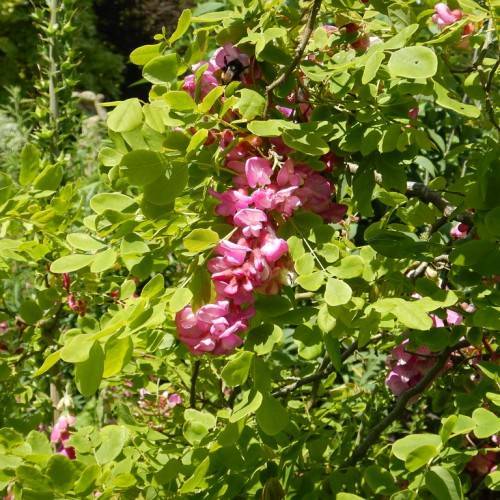
bristly locust
Robinia hispida
Cycle:
Perennial
Watering:
Minimum
Hardiness Zone:
5 - 8
Flowers:
Flowers In Spring
Sun:
Full sun
Leaf:
Yes
Growth Rate:
High
Maintenance:
Moderate
Drought Tolerant:
Yes
Salt Tolerant:
Yes
Thorny:
Yes
Invasive:
Yes
Care Level:
High
watering
Water your Bristly locust plants regularly during the first 2 years after planting and at least once per week during the growing season. This species does not tolerate drought very well, so be sure to provide it with adequate moisture. It prefers moist, well-drained soil and should be well watered during dry spells. During periods of heavy rainfall, water your plants less frequently. Avoid overwatering as wet soil can lead to root rot.
sunlight
Bristly locust, scientific name Robinia hispida, is a species of small tree native to eastern North America. This species prefers full sun and needs at least 6 to 8 hours of sunlight per day. As temperatures drop in the fall, the amount of sunlight needed can decrease. Planting in a sunny location early in the spring can help ensure that the bristly locust will receive the sun exposure it needs to thrive. When temperatures heat up in summer, the tree can thrive with some afternoon shade.
pruning
Bristly Locust is a species of shrubs or small trees which can grow up to 10 feet in height. The best time for pruning this species is in late winter to early spring as soon as the current year's growth has hardened off. This species is best pruned by removing dead, damaged, or crossing branches as well as thinning out the canopy to promote more air circulation and light penetration. If the plant is larger than normal, you can prune up to a third of the oldest branches to promote re-growth of fresh shoots. Keep in mind that this species is known to sucker profusely so prune as needed to open up the canopy and keep the plant tidy.
